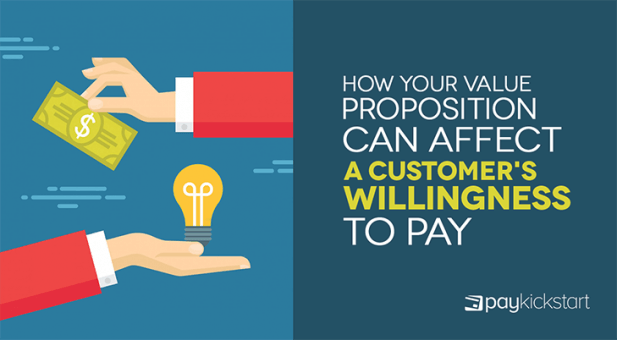Subscription growth hack (by PayKickstart)
Facebook Group - 3,932 members
Visit Group
You can describe any business as an exchange of value (described by the value proposition) for money. When customers do business with a company, they exchange their money for the value the company has to offer. Such is the case from the smallest company to the largest corporation.
For this exchange of value to be meaningful, the customer must feel the value they are getting is equivalent to or more than the money they are willing to pay.
For example, a hungry customer may be willing to pay $20 for a meal but may not be willing to pay $100 for the same meal, especially if they feel the value that they are getting is not equivalent to what they are paying.
In this article, we explore the connection between value (value proposition) and a customer’s willingness to pay for that value.

A value proposition or VP is a promise or value statement that tells your customers what you have to offer. It is also a commitment to meeting a customer’s specific needs. For example, if you run a bakery, your value proposition could be something as simple as:
“Get freshly baked donuts and freshly brewed coffee on your morning commute to work. Every weekday.”
What this tells your customers (working-class commuters) is that when they come into your store (on their way to work), they know what to expect (fresh donuts and coffee), come rain or shine.
In this sense, your value proposition offers clarity on what value you are providing.
On the flip side, there are certain things a value proposition isn’t.
These are:
Now that we have a clear picture of what a VP is, how does it affect a customer’s willingness to pay?
When a customer lands on your website, they come looking for a solution to their needs. In other words, they come looking for value. Your VP, which is often visible on your homepage, tells them whether they are in the right place or not. However, most customers, once they see you have value to offer, will compare this value to what you are charging. If your VP communicates low value relative to your pricing, a customer will be unwilling to pay. What you want to go for is a VP that demonstrates higher value than what you are charging, making a customer more willing to pay.
Price sensitivity is the relative amount of money a customer is willing to pay for goods or services. Multiple factors influence price sensitivity, including the cost of living, income level, perceived value, social pressures, among others. A strong VP considers all these factors to address the customer’s price sensitivity. For example, if a SaaS product only offers a handful of features but costs hundreds of dollars, the VP must clearly show the customer that even with few features, the product is worth the premium price.
It is no secret that your business has competitors and that your customers most likely know about them and are comparing you against them. Your VP comes as a strong determinant of how this comparison goes. Remember, your competition may be charging as much or even less than you. If your VP does not make a strong case for your product and pricing, your competition may win. In this way, a sharp VP ties pricing to value, helping your customers know you are a better bet, whether your prices are higher or lower than the competition.
Lastly, your VP demonstrates your product/market fit or PMF. PMF is a valuable indicator that shows whether your product is satisfactorily meeting the needs of a large enough market. For a customer, your product’s PMF translates into an “AHA!” moment that tells them they have found the right solution. However, that “AHA!” moment will never come if you do not have a strong VP. Similarly, if your VP does not match your pricing, that “AHA!” may quickly turn into an “AHEM!” as customers abandon your conversion funnel.
A strong value proposition is the foundation of your business. Here are a few ways you can ensure yours succeeds:
When you craft a strong VP, here are some of the benefits you can expect:
Most SaaS founders poorly understand the link between a VP and a customer’s willingness to pay. Most feel features speak for themselves, and hence tools like free trials and freemium models abound. However, without a strong VP, even a well-built SaaS product may underperform in conversions.
Here at PayKickstart, we understand this connection and strive to ensure we are offering great value for what you pay. To find out more about our VP and how easy we make it for you to pay, click here.
Dan Macharia is an experienced copywriter with over ten years of experience writing for both large and small companies all across the United States. When he is not writing, find him reading a book or outdoors playing lawn tennis, running or just walking and soaking in life.
Read More About Dan Macharia